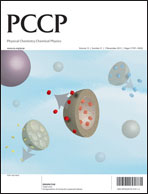Investigation of film formation properties during electrochemical oxidation of serotonin (5-HT) at polycrystalline boron doped diamond
Abstract
The change in surface morphology of oxygen-terminated polycrystalline boron doped diamond (pBDD) during electrochemical oxidation of the neurotransmitter serotonin (5-HT), resulting in a corresponding deterioration of the current signal, is investigated for the first time using both high resolution ex situ and in situ microscopy under a range of different electrochemical conditions. In situ electrochemical-atomic force microscopy (EC-AFM) reveals the formation of a granular film over the surface, which grows faster at higher-doped regions of the electrode surface and increases in thickness with repetitive potential cycles. The film properties were investigated using both cyclic voltammetry, with a range of redox species varying in charge, and conducting-AFM. These studies reveal the film to be positively charged and electrically insulating. The extent to which the film forms during 5-HT oxidation could be significantly minimised using different electrochemical procedures, as verified by voltammetry and in situ EC-AFM. Finally, even after extensive film formation, the original current signal could be recovered simply by leaving the electrode at open circuit potential for a short period of time, highlighting the suitability of BDD electrodes for neurotransmitter detection.


 Please wait while we load your content...
Please wait while we load your content...